Between turmoil, controversy and the brink of economic collapse, Pakistan and its people have had it rough these past few years. But it wasn’t that long ago that everything seemed so different. There were severe challenges back then, for sure, including the dreaded scourge of terror and the ever-present economic constraints. But on the back of two peaceful transitions of power and encouraging signs for investment, entrepreneurship and development, a sense of optimism could be felt. For Pakistan, a land of possibility seemed to be almost over the horizon.
Since the start of this decade, some things were no doubt beyond control. First the coronavirus pandemic and then war in Ukraine and the Middle East unleashed severe ripple affects in the global economy. Other things, however, could have gone quite differently. It is the responses our country’s leaders and powers that be chose that have equal part the state of things today.
Between last year and this one, a range of reports and indices point to a set of warning signs for our country. From democracy to rule of law, corruption perception to press freedom, where our country has not slid in score and rankings, its position appears to have stagnated.
As a new government takes charge in the face of ongoing controversy, this report hopes to compile a snapshot of how our country has fared on various fronts.

Democracy and rule of law
The year 2023 appeared to be a bad year from Pakistan, in terms of both democracy and rule of law. In a report capturing a snapshot of the state of democracy worldwide, the Economist Intelligence Unit demoted the country 11 places in the global ranking and downgraded it from a ‘hybrid regime’ to an ‘authoritarian regime’. Pakistan, which suffered the biggest regression in Asia, was among six states on the globe to have their classification changed. From Asia, it was the only country to be downgraded so significantly, although more than half of the 28 countries in the region recorded a decline in their scores.
Although Pakistan went to polls this year amid deep controversy, the EIU noted that “Unsurprisingly, elections in Bangladesh, Pakistan and Russia — where opposition forces are subject to state repression — will not bring regime change or more democracy.” It added that the “outsized political influence of the military… means that elections are far from being free, fair or competitive”.
In keeping with the trend over the last four years, Pakistan’s score and ranking on the Rule of Law Index also declined. It’s overall score in the report released by the World Justice Project dropped from 0.36 in 2020 to 0.32 in 2023, and it now ranks 130 out of 142 countries worldwide. It ranks fifth out of six countries in the region, with Afghanistan being the worst.
The score is compiled by taking into account a range of factors, such as constraints on government powers, absence of corruption, open government, fundamental rights, order and security, regulatory enforcement, civil justice, and criminal justice. The two factors that impact the score most are the absence of corruption on the top (where Pakistan received a score of 0.31) and order and security (where the country obtained a 0.33 score).
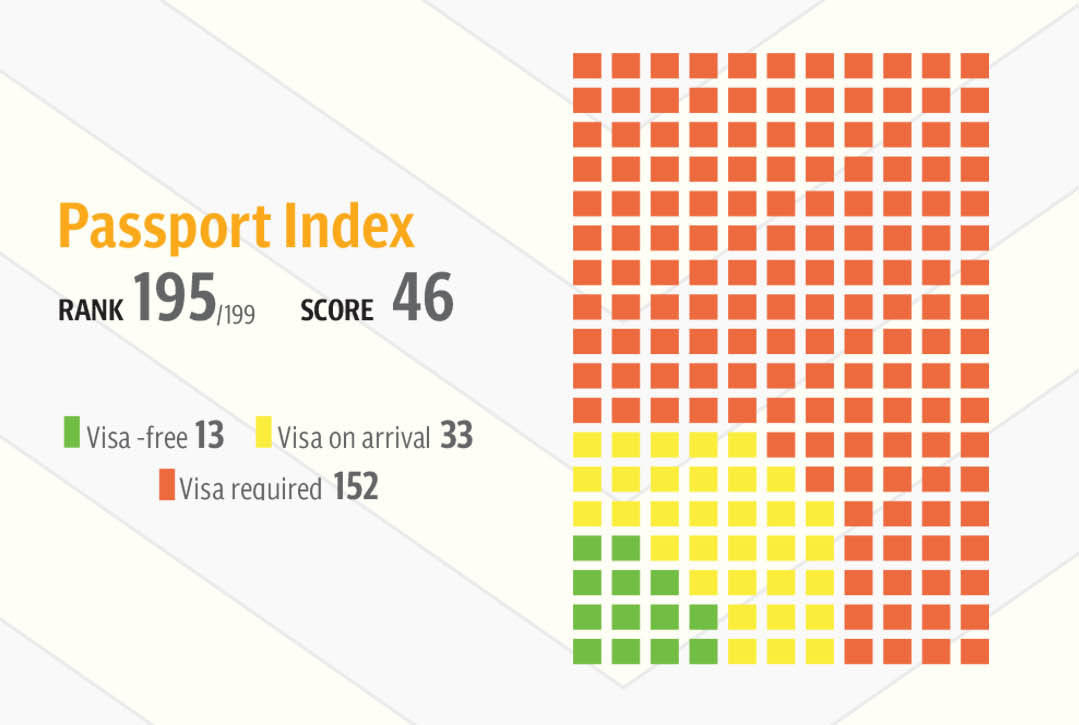
Speaking to The Express Tribune, political analyst and columnist Barrister Asad Rahim said, “The core problems Pakistan’s legal system is facing – which, by extension explain its rule of law score – are backlog, delay and quality of and access to justice, against the backdrop of political instability.”
He stressed the vast majority of Pakistan’s litigation is related to land disputes, and requires a centralisation of land registry as well as a computerisation of title. “The vast majority of litigation starts and ends at the courts of first instance, which are widely perceived as dysfunctional. This can only improve when the bar associations penalise lawyers for delay, judges impose costs, and the superior judiciary actively incentivises judicial performance by creating more space for elevation of the district judiciary to the High Courts and Supreme Court, which is at present disproportionately drawn from the bar,” explained Rahim.
He also discussed issues pertaining to access to justice, which, he lamented, will remain abysmal for as long as the main medium for legal processes remains English, a language that only a tiny minority can understand, and which locks the citizen out of either inclusion within, or comprehension of, his own justice system.
He also criticised the turbulent political system where parts of the deep state encourage defying judicial orders. “They can’t bode well for the rule of law. A starting step towards remedying this would be elected governments completing their full term, and a bipartisan consensus that blocks out undemocratic forces,” he suggested.
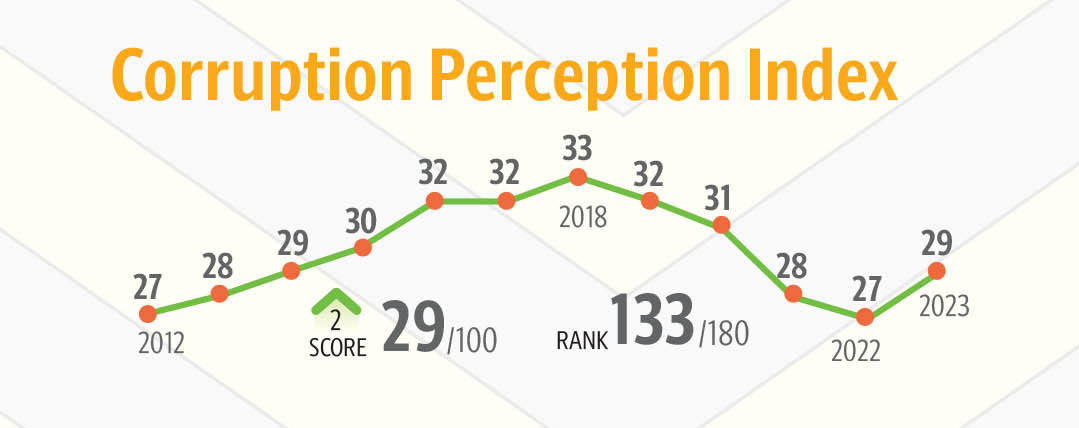
Corruption perception: better, but not enough
On the latest edition of the Corruption Perception Index, released annually by Transparency International, Pakistan showed a slight improvement last year. Its public sector corruption perception score improved two points from 2022 (29, compared to 27 in 2022), and the country climbed up seven spots in rankings, moving from 140 to 133 in a list of 180.
However, since peaking at 33 in 2018, Pakistan’s score had been on a steady decline up till 2022. Its place in the rankings fell even more sharply over the timeframe, from 117 in 2018 to 140 in 2022. Coincidentally, the period lines up with the year the Pakistan Tehreek-e-Insaf came to power to year its chief, Imran Khan, was removed as prime minister following the vote of no confidence.
The chairman of Transparency International Pakistan, Justice (retd) Zia Pervez, emphasised the need for sustained efforts. He believed that stricter enforcement of laws and better governance policies, alongside implementing their recommendations, could yield further positive results in the future.
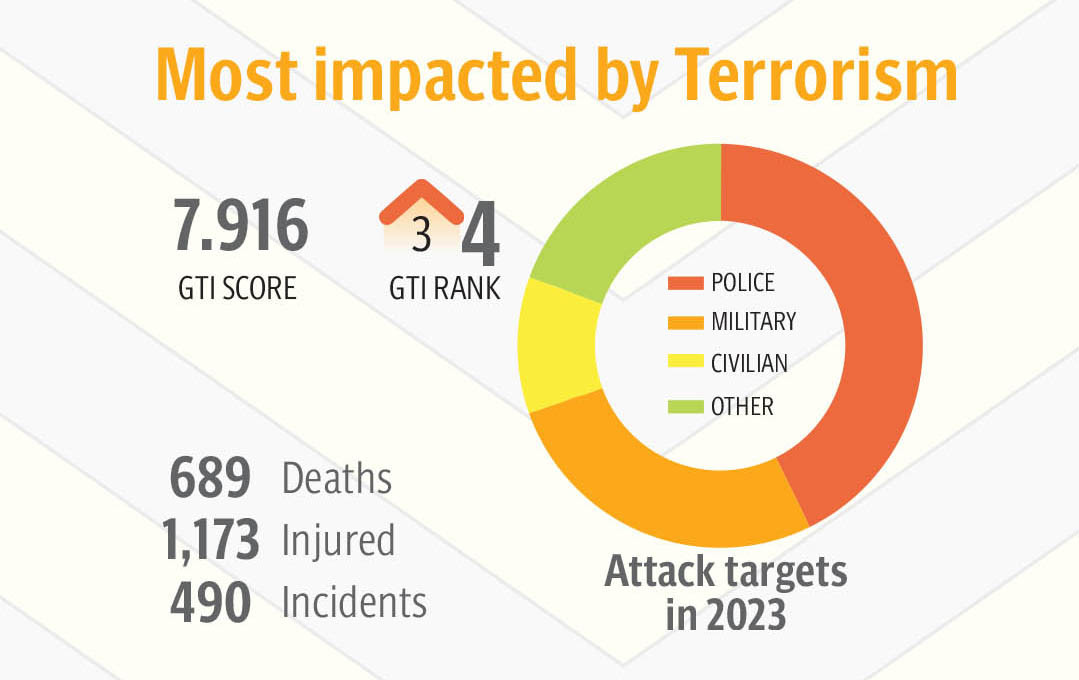
Deadly surge in terror
The 2024 Global Terrorism Index report, produced by the Institute for Economics & Peace (IEP) using data from Terrorism Tracker and other sources, indicates a concerning trend. While the number of terrorist attacks decreased by 22% in 2023, the death toll rose by 22%, reaching its highest level since 2017. Pakistan experienced a significant rise in terrorism, becoming the country with the most attacks (490) and accounting for 8% of global terrorism deaths (689).
This deadliness is attributed to fewer but more lethal attacks. This shift is concerning as the number of countries affected dropped from a peak of 57 in 2015 to 41 in 2023.
Pakistan's situation is particularly alarming. The country jumped three spots to the fourth worst on the Index, with its worst ranking since 2016. Among the 20 deadliest attacks globally, two occurred in Pakistan. One, the fourth deadliest, targeted a mosque in Peshawar, killing 84. The other, ranked 15th, targeted a mosque in Mastung, killing 53.
The report links this rise to the Taliban's takeover of Afghanistan. Militant groups operating there have intensified attacks, particularly along the shared border. Pakistan's border provinces, Balochistan and Khyber Pakhtunkhwa, bore the brunt of this violence, accounting for 93% of attacks and 96% of terrorism-related deaths within Pakistan in 2023. Notably, Tehrik-e-Taliban Pakistan (TTP) surpassed the Balochistan Liberation Army as the deadliest terror organization in the country.
While the global number of countries affected by terrorism has decreased, the situation in Pakistan highlights the evolving nature of the threat. More concentrated attacks with a higher death toll necessitate immediate action to address the root causes and combat the resurgence of terrorist activity in the region.

Press freedom: improvement masks concerns
A hope emerged in the 2023 World Press Freedom Index, with Pakistan climbing seven spots to 150. However, this slight progress shouldn't mask the harsh reality for journalists working in the country. There are number of issues that journalists face in Pakistan, the key ones including the eye of the government, financial struggles and threats to their lives and livelihood.
The government's tight grip on media regulators allows it to muzzle critical voices, especially those scrutinising the establishment. Vague laws like the Prevention of Electronic Crimes (PECA) Act 2016 threaten journalists with hefty fines or even imprisonment for daring to challenge established narratives.
Haroon Baloch, a media and digital rights expert at Bytes for All, while highlighting some of the factors in losing public’s trust in journalism, said, “A crucial factor in the erosion of public trust is the perception that journalists themselves have strayed from neutrality. This lack of objectivity, where journalists are seen as portraying themselves more as political activists than unbiased reporters, undermines the media's credibility and ability to serve the public as a watchdog.”
Shedding light on the interest of the media owners that has been impacting journalism in Pakistan, he said a close relationship with powerful interests makes editorial policies susceptible to manipulation. “State institutions can easily exert pressure on these media outlets, essentially dictating the content and stifling any attempt at investigative journalism that might expose their wrongdoings."
Against that backdrop, Baloch highlighted a source of concern: “We are witnessing a worrying trend where powerful entities are actively pushing for a more restrictive legal framework for journalists,” he explained. “The tightening of defamation laws, particularly the absence of exceptions for journalists, creates a climate of fear and discourages critical reporting on institutions. This essentially allows the powerful to control the narrative and shield themselves from scrutiny.”
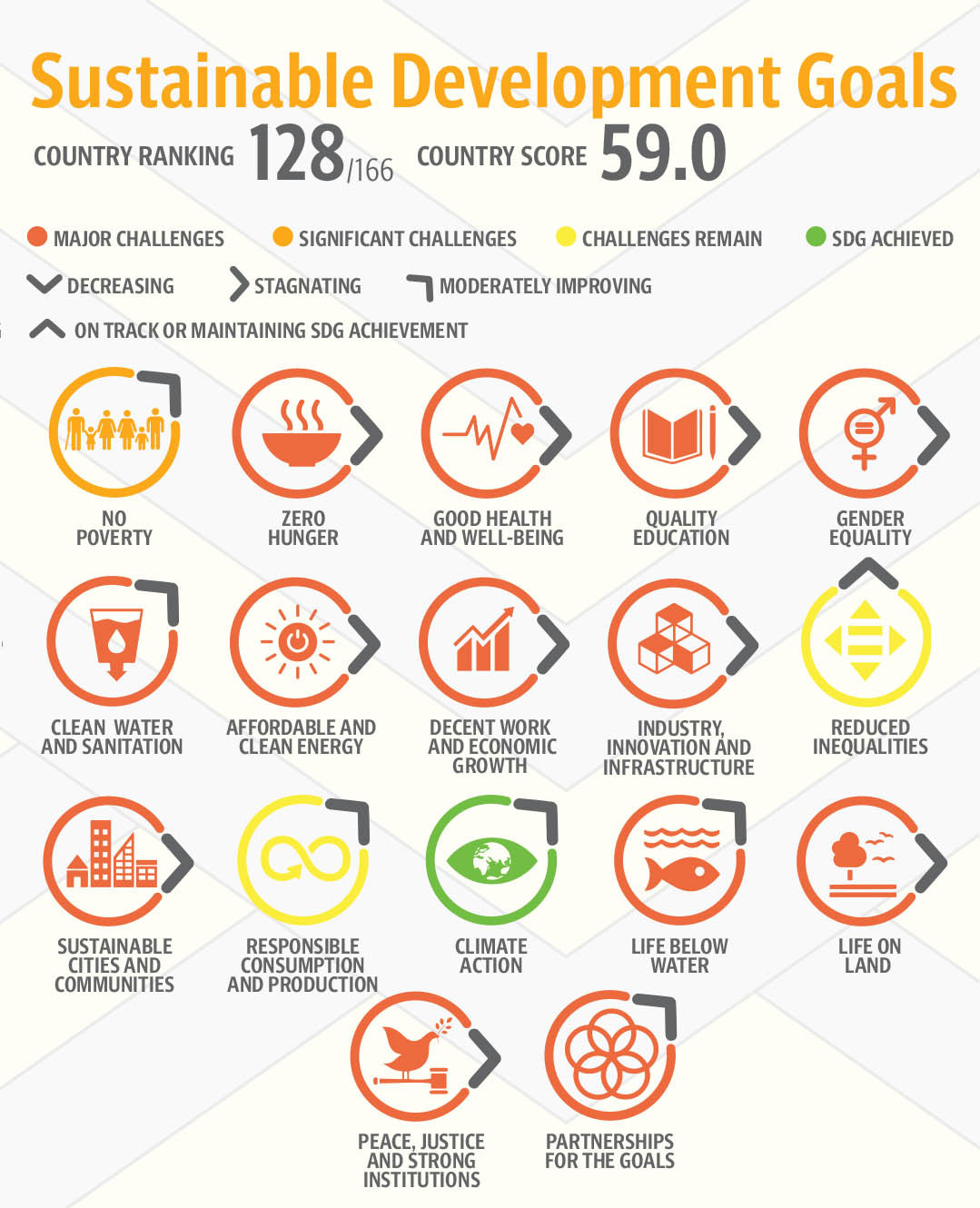
Far from sustainable development
Among many ideas to develop a country and uplift a nation, Sustainable Development Goals (SDGs) were designed by the United Nations. The UN member states approved these 17 interconnected global goals in 2015 as part of the 2030 Agenda for Sustainable Development. The SDGs seek to tackle a range of global social, economic, and environmental issues, ultimately leading to a more equal and sustainable future for all.
Every goal has corresponding targets and indicators to track advancement. Concerning all nations, regardless of their degree of development, the SDGs are global in scope.
The goal year for accomplishing the SDGs is 2023. By that year, countries should have made great strides towards achieving the objectives. The 2030 Agenda highlights the significance of collaborative efforts and alliances across international, regional, national, and local domains to expedite the advancement of sustainable development. Pakistan is part of it and has been working on the SDGs on a micro level. Pakistan stands at 128 ranks out of 166 countries with a 58.97 score
The countries were required to achieve the Millennium Development Goals by 2015. However, like many others, Pakistan was unable to meet several milestones. Subsequently, the UN proposed the SDGs.
Each province has established committees to pursue goals in various sectors. While some areas have experienced limited successes, in many aspects, we lag behind. Baela Raza Jamil, CEO of Idara-e-Taleem-o-Aagahi (ITA), emphasised, "It's not just Pakistan grappling with educational challenges; globally, the situation post-COVID isn't promising." Jamil pointed out that data trends indicate the education sector performed well from 2014 to 2019. However, the impact of COVID-19 and subsequent floods notably contributed to declining enrolments in certain regions.
Pakistan has been under scrutiny, and the country's internal statistics don't present an optimistic outlook. However, with determination to excel and invest in various sectors, significant progress has been observed. "Gilgit-Baltistan has witnessed a notable 8.5 per cent rise in enrolment recently, thanks to the proactive efforts of the chief secretary in the education sector. Similarly, achieving other SDGs depends more on bureaucratic will than political inclination," she explained, emphasising that the country is at a tipping point.
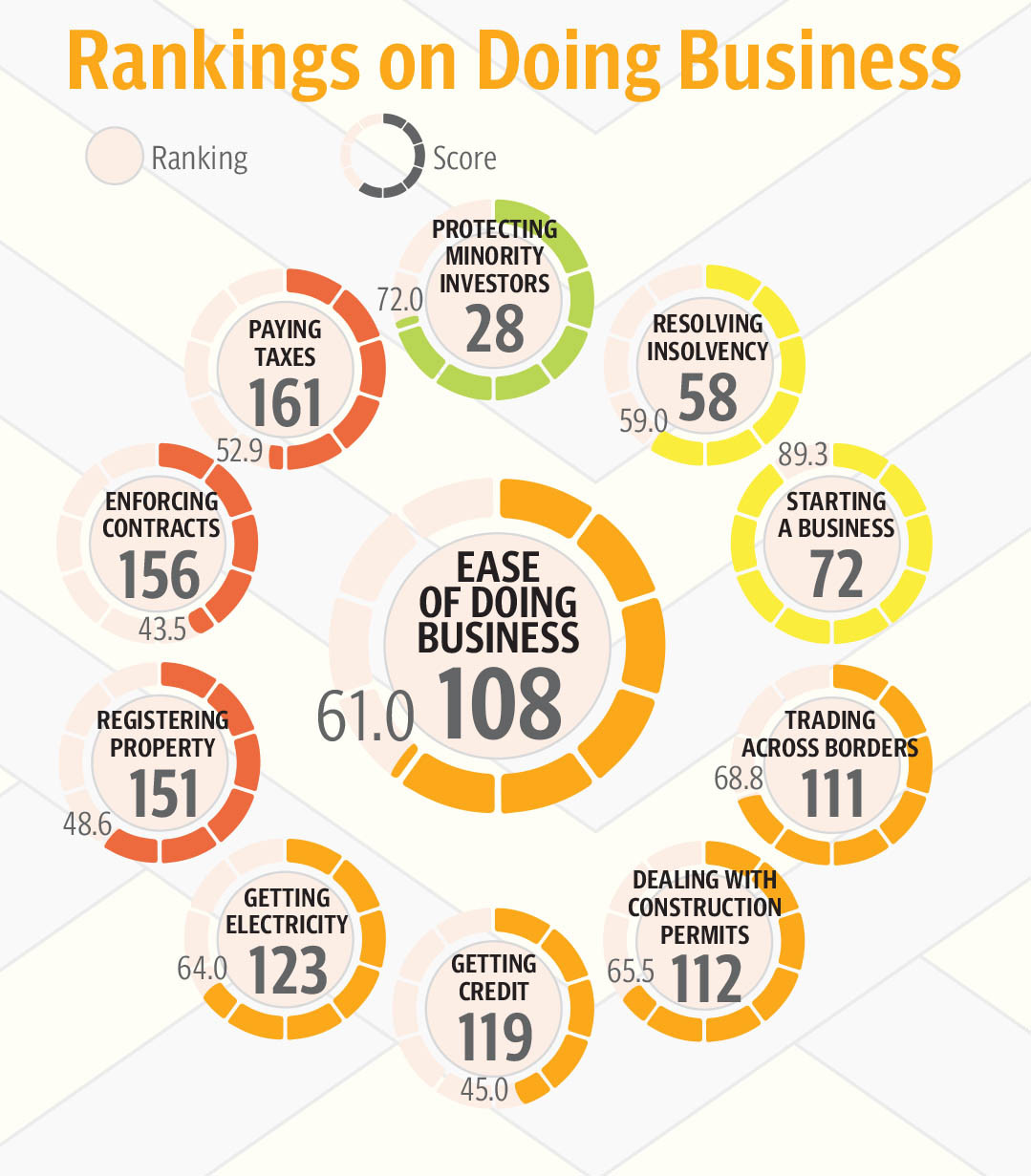
In the current educational landscape of Sindh, 39 per cent of Grade 2 schools operate as multi-grade classrooms with just one or two teachers. "Out of over 46,000 schools, 91 per cent are primary, and the quality crisis is severe. Although the data is improving, the pressing question remains: who is willing to utilise it?" Jamil lamented. She further noted that girls are excelling across two out of three components, emphasising that these statistics could significantly contribute to achieving the SDGs if taken seriously.
Stakeholders and civil society have been consistently highlighting the shifting climate and environmental concerns across various platforms for some time now. However, the country's current stance and its readiness to make long-term decisions have not been very conducive. Pakistan ranks in the top 10 on the Climate Risk Index, with 173 recorded events between 2000 and 2019 and an annual average of 502 fatalities. Moreover, the country has been witnessing unmistakable climate changes while the government continues to offer ad-hoc solutions rather than comprehensive strategies.
Pakistan's efforts for a prosperous and environmentally sustainable future are closely linked to the challenges stemming from Arctic warming and the country's unique climate conditions. Despite being geographically distant from the Arctic, Pakistan is experiencing visible impacts of Arctic warming on its environmental landscape. With a score of 87.83 out of 100 on the Climate Risk Index, Pakistan faces significant vulnerability to persistent climate risks. Navigating through these environmental challenges is crucial for Pakistan's progress towards achieving the SDGs.

Human development and life expectancy
Life expectancy and human development are two other major aspects for Pakistan, both of which show notable improvement. Average life expectancy increased from 60.1 years in 1990 to 66.1 in 2021, primarily due to enhanced healthcare facilities. However, according to the World Health Organisation, Pakistan ranked 105 out of 195 countries in the 2019 Global Health Security Index, scoring 35.5. While Pakistan has performed relatively well in terms of digital capacity and laboratory networks, it has fared poorly in areas such as laws and regulations, readiness for potential health security threats, availability of emergency response teams, interoperable surveillance systems, and simulation exercises.
Life expectancy at birth measures the health dimension, while the mean number of years spent in school for individuals over 25, and the expected number of years spent in school for children ready to start, gauge the education dimension. Gross National Income (GNI) per capita reflects the standard of living. The Human Development Index (HDI) logarithmically transforms income to reflect its diminishing significance as GNI rises. Finally, the geometric mean combines the results of the three HDI dimension indices into a composite index.
"There are numerous indicators contributing to global rankings, and the health sector numbers vary significantly due to differing preventive measures," explained Qasim Soomro, a health parliamentarian. He highlighted that major diseases prevalent in Sindh are water-borne, including diarrhoea, typhoid, and cholera. "These diseases consume a considerable portion of the budget, thereby affecting tertiary care. For instance, diseases like cancer and urological ailments cost around Rs4 million to Rs5 million per person," he added.
Only 38 to 39 per cent of Sindh's clean drinking water comes from rivers, with other areas relying on precipitation from rains, glacier melts, and other sources. "The country also lacks adequate water filtration. Unfiltered water ends up in underground soil, rivers, and the sea," contributing to airborne diseases," highlighted Soomro, who served in the last tenure of the Sindh government. Despite the efforts of the standing committee for SDGs, Soomro mentioned not having current data despite requesting it from the Planning and Development department.
